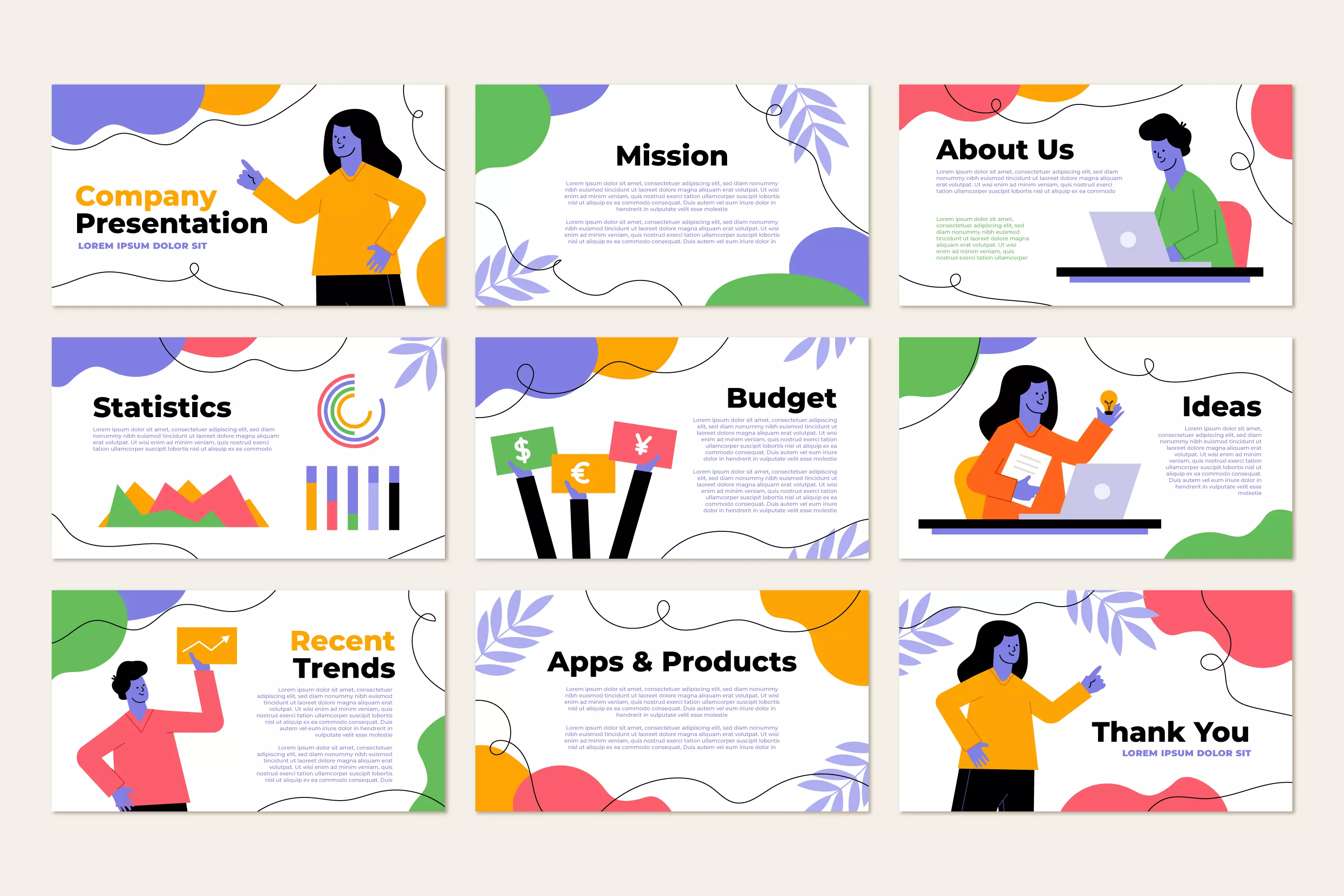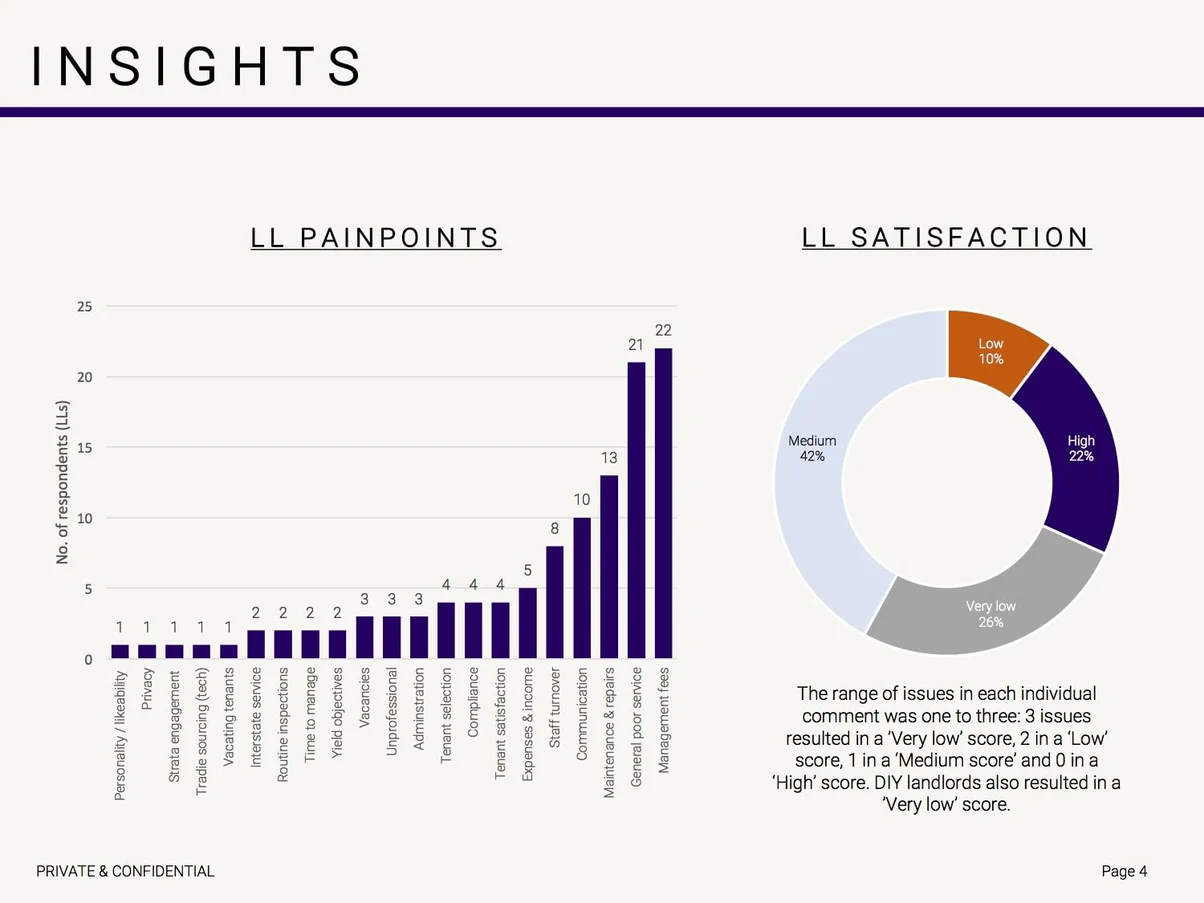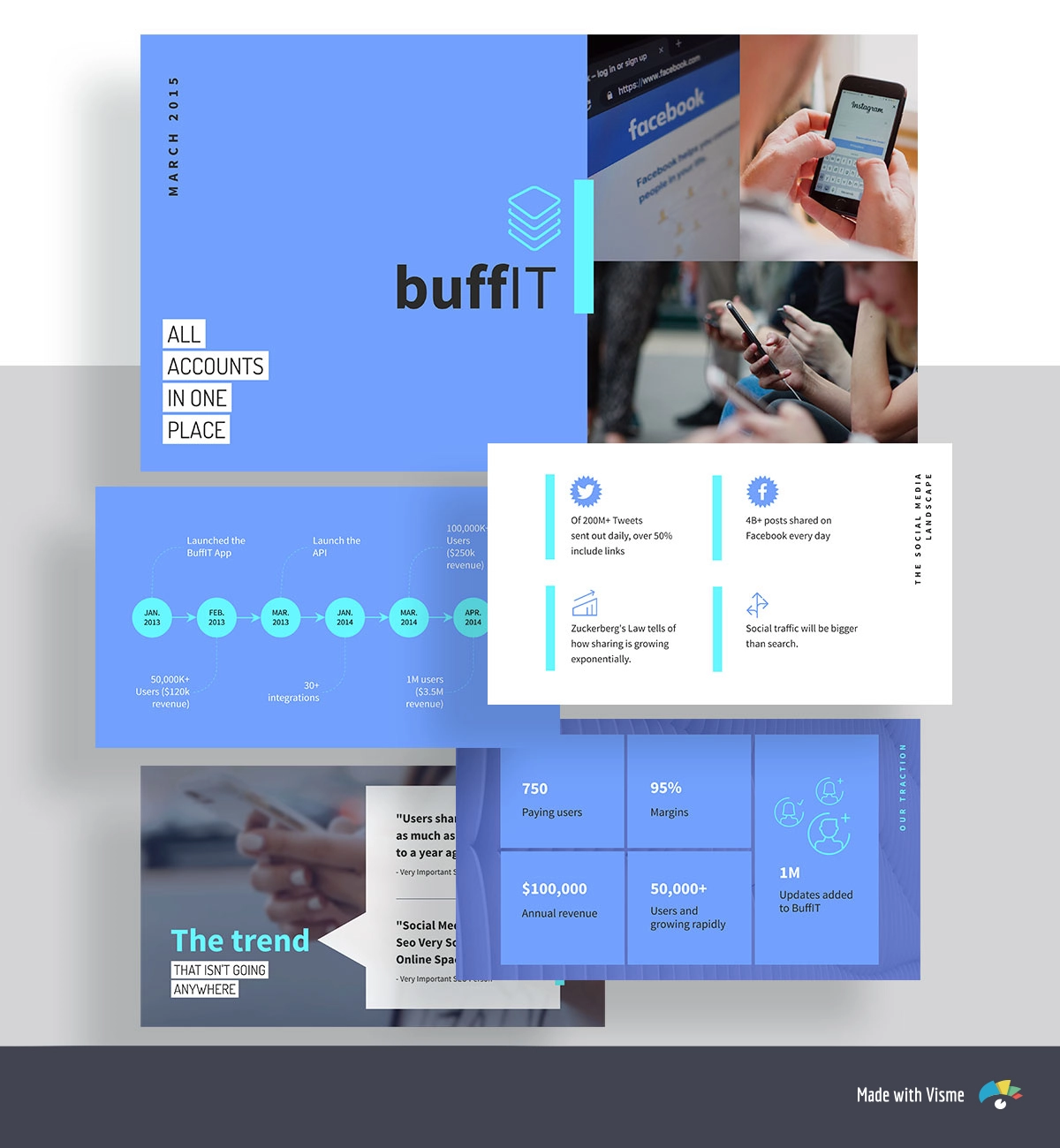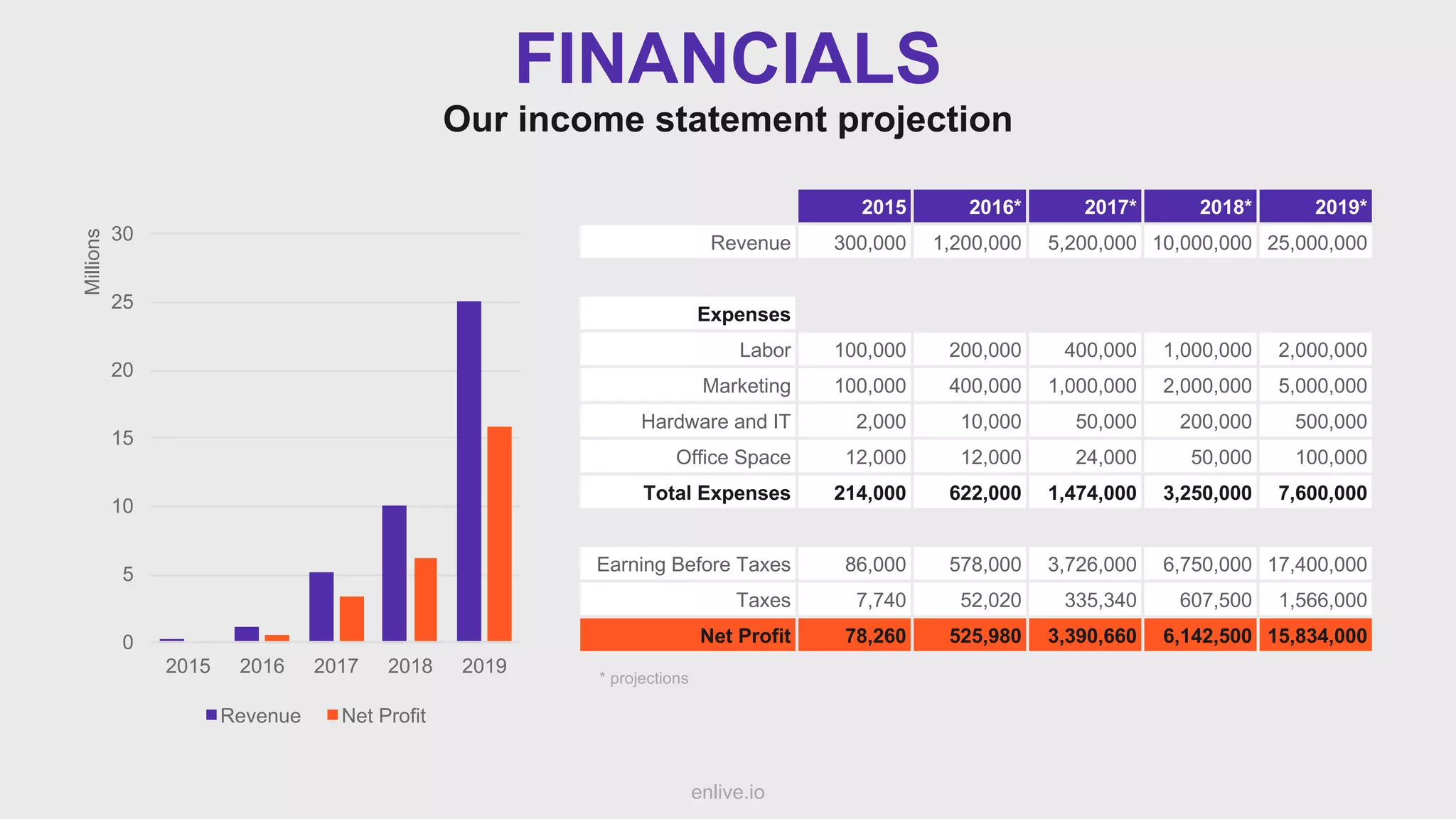
Vlad Yudkin
January 15, 2024
Crafting Success: The Art and Science of Pitch Deck Design
In the world of entrepreneurship and investment, the pitch deck is a fundamental tool that can make or break a business idea. A pitch deck is a visual presentation that provides a concise overview of your business, highlighting its value proposition, market potential, and financial projections. However, it's not just about the content; the design of your pitch deck plays a pivotal role in capturing the attention of potential investors. In this article, we will explore what pitch deck design entails, the invaluable benefits it offers, and essential tips for creating an impactful pitch deck design.
What is Pitch Deck Design?
Pitch deck design is the strategic and creative process of crafting a visually compelling presentation that effectively communicates your business idea and its potential. It involves the use of engaging visuals, consistent branding, and clear messaging to convey complex concepts in a simple, understandable manner. A well-designed pitch deck not only captures the audience's attention but also conveys professionalism and confidence, instilling trust in potential investors.

Benefits of Pitch Deck Design
- Captures Attention. A visually appealing pitch deck immediately captures the audience's attention, encouraging them to engage with your content and stay focused throughout the presentation.
- Enhances Credibility. A professionally designed pitch deck enhances your credibility and demonstrates your commitment to the business. It showcases attention to detail and careful planning, which are qualities investors look for in entrepreneurs.
- Simplifies Complex Ideas. Through effective design elements such as infographics, charts, and diagrams, pitch decks simplify intricate business concepts, making it easier for investors to grasp your business model and market potential.
- Strengthens Branding. Consistent use of branding elements like logos, colors, and typography reinforces your brand identity. A cohesive design instills confidence in your brand and makes your business more memorable.
- Facilitates Emotional Connection. Thoughtful design evokes emotions and creates a connection with the audience. An emotional connection can leave a lasting impression and increase the likelihood of investors remembering your pitch.

Types of Pitch Deck Design
Pitch deck designs can vary widely based on the nature of the business, the target audience, and the specific purpose of the presentation. Different types of pitch deck designs cater to various industries, startup stages, and investment needs. Here are some common types of pitch deck designs:
Traditional Pitch Deck
- Purpose: To introduce the business idea, showcase the team, outline the problem and solution, present the market opportunity, and provide financial projections.
- Design Elements: Clean and professional layout with a clear structure, including sections for problem statement, solution, market analysis, business model, revenue projections, and team bios.
Investor Pitch Deck
- Purpose: Specifically tailored to attract potential investors by highlighting the business's scalability, revenue model, market traction, and financial viability.
- Design Elements: Emphasizes financial data, growth metrics, and key performance indicators (KPIs). Includes charts, graphs, and visuals to illustrate market trends and revenue projections.
Product Pitch Deck
- Purpose: Focuses on showcasing a new product or service, detailing its features, benefits, unique selling points (USPs), and market demand.
- Design Elements: High-quality product images, interactive prototypes (if applicable), and user testimonials. Emphasizes the product's value proposition and how it solves a specific problem.
Sales Pitch Deck
- Purpose: Aimed at persuading potential clients or partners to purchase a product or service. Focuses on demonstrating the product's value and addressing the client's specific needs.
- Design Elements: Incorporates case studies, testimonials, and real-life examples of how the product/service solved similar problems for other clients. May include interactive demos or videos.
Demo Day Pitch Deck
- Purpose: Designed for startup competitions or accelerator demo days, where entrepreneurs pitch their businesses to a panel of judges or potential investors.
- Design Elements: Engaging visuals, compelling storytelling, and a strong emphasis on the problem-solution fit. Often includes a live demo or prototype showcase to demonstrate the product in action.
Educational Pitch Deck
- Purpose: Created for educational purposes, such as workshops, seminars, or training sessions, to impart knowledge about a specific topic or industry.
- Design Elements: Focuses on clear and concise information delivery. Utilizes infographics, diagrams, and bullet points to explain complex concepts. Prioritizes visual aids to enhance understanding.
Non-Profit or Social Impact Pitch Deck
- Purpose: Geared towards attracting funding or partnerships for social or environmental initiatives. Focuses on the organization's mission, impact metrics, and community engagement efforts.
- Design Elements: Incorporates compelling stories, photographs, and testimonials from beneficiaries. Highlights the organization's achievements, goals, and the societal change it aims to create.
When creating a pitch deck, it's crucial to align the design with the specific goals of the presentation. Tailoring the design elements to suit the audience and purpose ensures that the pitch deck effectively communicates the intended message and increases the likelihood of achieving the desired outcomes.

How to Create a Good Pitch Deck Design
- Understand Your Audience. Tailor your pitch deck design to the preferences and expectations of your target investors. Research their past investments and presentation styles to align your design accordingly.
- Craft a Compelling Story. Structure your pitch deck as a narrative that flows seamlessly. Introduce the problem, present your solution, and highlight the market opportunity. Use visuals to reinforce key points and keep the story engaging.
- Simplicity is Key. Avoid clutter and information overload. Use concise language, clear visuals, and minimal text. Focus on the most critical aspects of your business and present them succinctly.
- Visual Hierarchy. Prioritize essential information using visual hierarchy techniques. Use larger fonts, bold colors, and prominent placement to draw attention to key messages, data points, and calls to action.
- Professional Graphics. Invest in high-quality graphics and images. Avoid generic stock photos and opt for custom illustrations or photographs that resonate with your brand and message.

- Practice and Refinement. Practice your pitch multiple times, incorporating feedback from peers, mentors, or advisors. Refine your design based on their suggestions, ensuring that your pitch deck is polished and well-received.
- Stay Consistent. Maintain consistency in design elements throughout the pitch deck. Consistent use of colors, fonts, and imagery creates a cohesive and professional look, reinforcing your brand identity.
Pitch deck design is a powerful tool that can significantly influence investors' perceptions of your business. By investing time and effort into creating a visually appealing and impactful pitch deck, entrepreneurs can increase their chances of securing funding and turning their innovative ideas into successful ventures. Thoughtful design, coupled with a compelling narrative, has the potential to leave a lasting impression, paving the way for a promising entrepreneurial journey. You can also ask for help.
Sources:
Pitch Deck for Enlive
What is a Pitch Deck? Examples, Tips and Templates
What you need to know about Pitch Deck Design
How To Design A Pitch Deck That Will Impress investors
Creating a Pitch Deck? 5 Ways to Design a Winner




